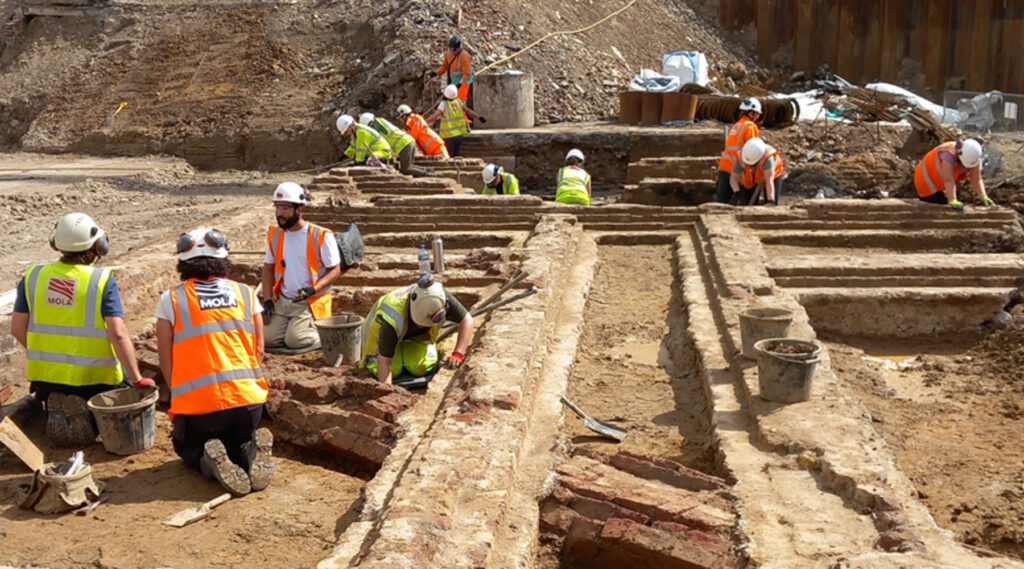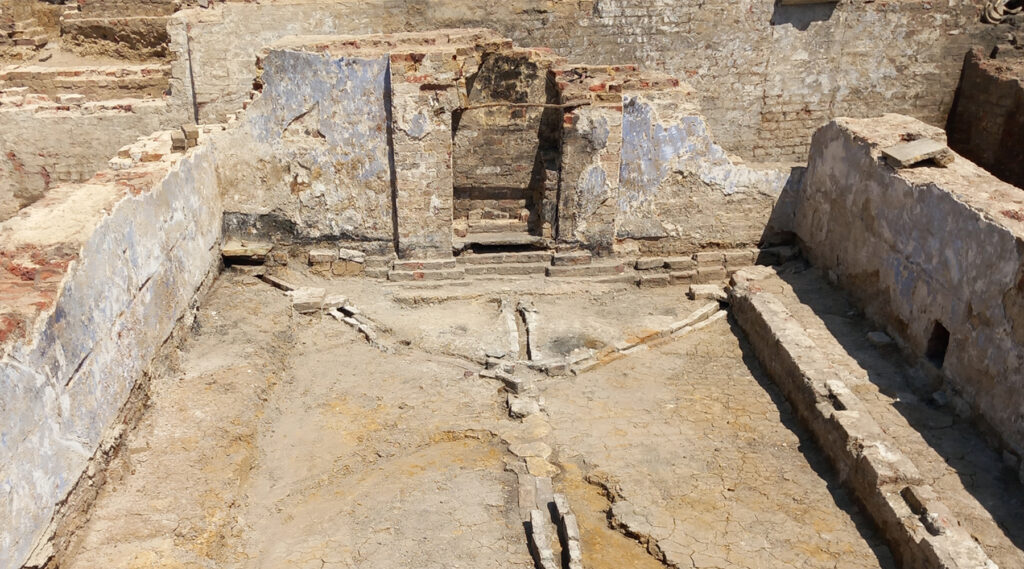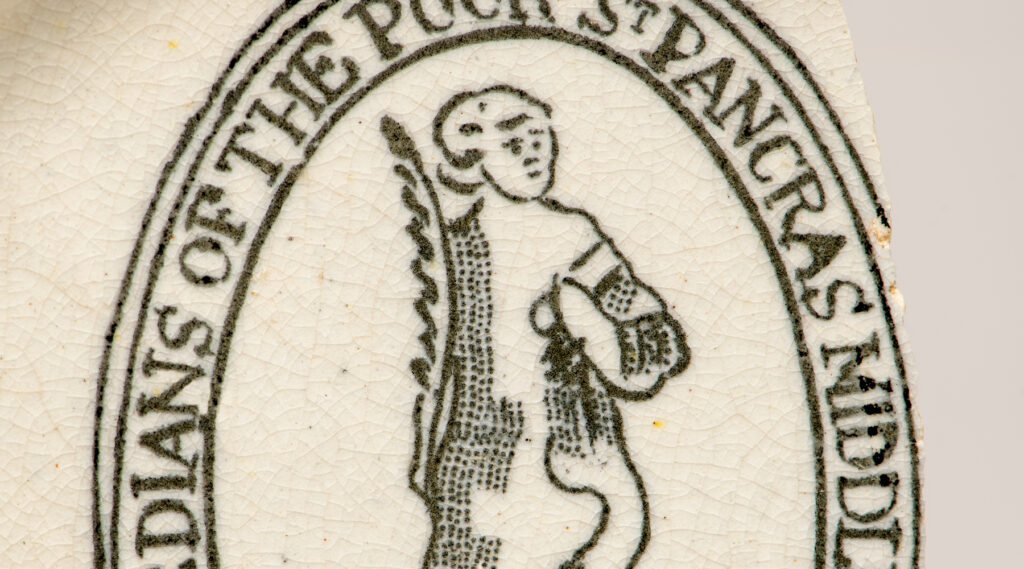The early history of a notorious London workhouse, whose putrid conditions may have inspired Charles Dickens’ Oliver Twist, has been uncovered by archaeologists who found that early conditions were far better than the later years.
Along with unexpectedly well preserved walls, they’ve uncovered a series of mysterious channels under the female wards that are puzzling the researchers.
London’s workhouses were established to support the poor but also as a way to deter people from taking advantage of the state. Consequently, so called ‘inmates’ were often separated into wards and often ended up doing repetitive tasks or hard labour. The 200-year-old St Pancras workhouse was one of the more notorious, but recent excavations suggest that the workhouse may have started out with a greater focus on support rather than deterrence.
The MOLA (Museum of London Archaeology) excavations provided insights into the lives of people who lived in the workhouse and a new understanding of how conditions changed over time. Key finds include intact walls with brightly coloured plaster, fireplaces, branded crockery, personal items, and unusually, the use of expensive Yorkstone flooring.
Archaeologists are excavating the 200-year-old St Pancras workhouse site before the site is redeveloped for Oriel, a new centre for eye care, research and education. The team focussed on areas of the site where workhouse buildings were demolished after being bombed during World War II.
The story of the entire St Pancras Hospital site begins with the construction of a workhouse in 1809, and a significant portion of these original buildings lie under the excavation site. The St Pancras Workhouse saw several expansions throughout its over 100-year history to deal with severe overcrowding.
While historical records testify to the hard labour and brutal conditions experienced at St Pancras Workhouse during the late 1800s, little was known about its early years.
In one area of the 1809 building, the MOLA team discovered fireplaces, suggesting thought was given to the comfort of inmates. This area is believed to be the original female wards and was extremely well-preserved. Walls were found standing up to a metre high, coated in vibrant blue painted plaster – conjuring up a very different picture compared with the dark, dingy workhouses often depicted in popular culture.
The excavations also uncovered a series of seven simpler lower ground floor rooms running along the front of the building. Archaeologists were able to identify that soot covered the recycled-brick flooring in all these rooms, suggesting they were probably used to store coal.
Gwilym Williams, MOLA Project Manager, said: “The survival of walls up to a metre high, fireplaces, and brightly coloured plaster is extraordinary. Previously, little was known about this building other than its shape marked on parish maps. These discoveries allow us to get a vivid picture of life in early 19th century workhouses.”
The excavations have also uncovered items used in the workhouse. One of the rooms used to store coal contained a large amount of institutional crockery. These plates have an image of St Pancras and the words ‘Guardians of the Poor St Pancras Middlesex’. Archaeologists also found the remains of a bone toothbrush with horsehair bristles – showing that personal hygiene remained important.
Free healthcare was provided onsite from 1812, when the first infirmary was built. Sick wards continued to be added, for inmates and the local population, until the workhouse became St Pancras Hospital in 1929. Oriel is therefore, the latest chapter in a long-held tradition for providing free healthcare at this site.
Despite these small comforts for early workhouse inmates, archaeologists have also revealed the disparity between worker and supervisor. Rooms and adjoining corridors believed to be the master’s offices and living quarters were found to contain expensive Yorkstone flooring – likely added after the workhouse was built to enable the masters to live in greater comfort.
During World War II part of St Pancras Hospital was bombed, and some of the workhouse buildings were demolished. These are the areas archaeologists have excavated, recording the development of the workhouse from 1809 to the early 20th century.
The MOLA team is still looking at what has been found to answer remaining questions. For example, the female wards contain small, stone-lined channels that would have run under the floor. However, these do not appear to connect with any drains.
These channels are being studied and analysed to try and understand their purpose.
St Pancras workhouse timeline
1723 – Act is introduced requiring the poor to live in workhouses to access support in some areas.
1731 – St Pancras Workhouse opens in rented buildings near the Oriel site.
1809 – New workhouse is built on Oriel site to deal with overcrowding.
1812 & 1849 – Two infirmaries are added, which provide free healthcare to workhouse residents.
1870s-80s – A new extension is built to deal with overcrowding.
1929 – Local Government Act prompts local government to turn the workhouse into St Pancras Hospital.
1940s – Bombing during World War II damages some of the buildings, which are later demolished.










Interesting report on early poor law provision – but actually this sort of provision dates back to Tudor times, with an Elizabethan law to enforce parishes to provide support, although with some repressive aspects.
And in 1834 the New Poor Law brought those repressive and more brutal aspects back with a vengeance, hence the Dickensian descriptions.
Very interesting and Mike is correct in his comments.
I have just had published a book describing the history of healthcare. I particularly focus on the little-known plague/pest house. These were arranged in an hoc fashion prior to 1665. Charles ll issued an Edict stipulating that all parishes must assign a house/shed /tent as a pest house to deal with the Great Plague. I compare and contrast the actions taken then to the actions taken in 2020 with the covid pandemic. Do contact me if you are interested in the book. As far as I know no-one else has written specifically about the pest houses.